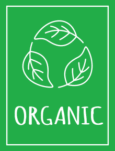
Maple Syrup Production
For us, making Maple Syrup is a yearlong process. From June – December you can find us making improvements in our woods, on our existing lines or setting up new installation. If we have good, cold temperatures once December hits- we can start tapping our trees but only if they are frozen.
Our son Evan invented the tool we use to tap our trees called the Precision Tapper. Only mature maple trees are tapped, meaning the tree must be 30 to 40 years of age and at least 12-14 inches in diameter.
A healthy tree can accept multiple taps throughout its lifetime without permanent damage being done. Each year a new tap is put in a new location on the tree. It is especially important to keep the tree healthy, so it will produce sap for many more years to come. If healthy, a maple tree can yield sap for 100 years or more.
Pictured below is a member of our crew using the Precision Tapper to tap a tree. After the hole is drilled, a plastic spout is tapped into the previously drilled hole using a plastic hammer. Through the spout the sap will flow into the tubing – where it is moved to a central location and collected into holding tanks.
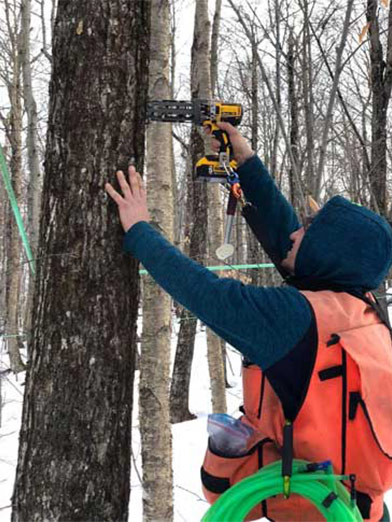

We continue to tap during the months of January and February if the days and nights remain cold; however, the weather may get warm enough some days for the tree to run some sap. Throughout March and April is when the sap should run at its best. With warm days and cold nights playing the biggest factor, they also need a variety of snow and rain to keep the ground wet and the trees moist. This is also when the trees are turning their stored starches into sugar. Sap may flow out of a tree at about 2% sugar content. It takes 40 gallons of sap to make only 1 gallon of Maple Syrup.

Sap Flow
Here is a picture of the sap coming in from the woods by tubing and entering a releasor at the sugarhouse, where it will then find its way to the holding tanks.

Classic Sugaring
Much different than the picture above, the picture shows how our sap used to find its way to the sugarhouse. We used buckets to collect the sap from the trees. Once the bucket was full of sap, we would dump the sap into a large tank being towed around on a wagon by our family horses. The horses would then draw the full tank of sap to a tank in the woods which would flow to the sugarhouse. How our family first started sugaring is quite different than the way we know it now!

Tank Room
Once the sap has made its way out of the woods and into the sugarhouse, it is stored in clean stainless, or glass lined holding tanks to keep cold. Here is our picture of our Tank Room at the Sugar house.
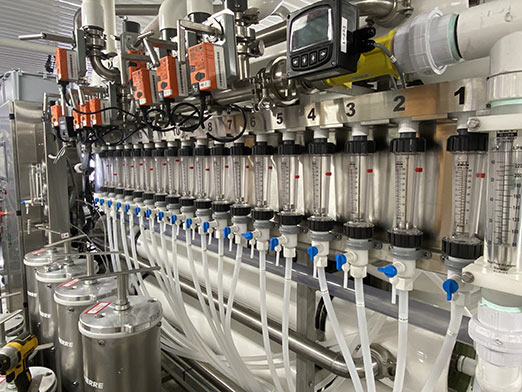
Osmosis
Next, the sap enters the reverse osmosis machine which separates water from water-soluble solids. In doing so, this can reduce the boiling process in half. From the reverse osmosis machine, the concentrated sap is then fed into the evaporator.
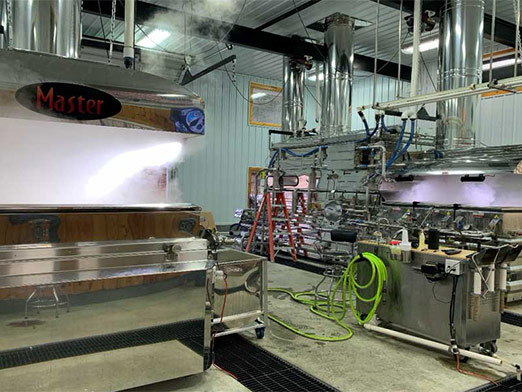
Evaporators
At our facility we use two, 6’x16’ Evaporators for our boiling process. It takes approximately 11 gallons of concentrated sap to move through various stages in the evaporator in high heat to create 1 gallon of maple syrup. Between using both the reverse osmosis process and the boiling process, the tree sap goes from 2% sugar to 66.9% sugar in the final stage of becoming maple syrup.
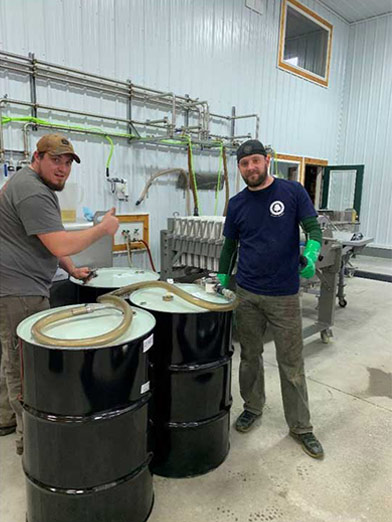
Filtering
The maple syrup is then sent through a filter press to remove the solidified minerals, called sugar sand. The syrup is then packed into 55-gallon barrels for storage. Pictured below is our son Kyle and friend Levi, filling the 55-gallon barrels and giving their Uncle Shaun a thumbs up as he was keeping track of them remotely!
When the warmer weather approaches and the trees start to bud, our sugaring season ends. Usually anywhere from the end of April to the beginning of May, we pull all the taps out of the trees and being cleaning up! Our crew makes sure that all the tanks, equipment, floors, walls and trucks are cleaned and serviced; ready to go when the next season appears!
While our long process from the woods to the barrel ends. Our kitchen crew is still hard at work – packing syrup, making our specialty foods, selling and shipping our variety of delicious maple products close to home and worldwide.








